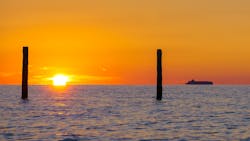Chesapeake Bay Foundation releases report on slow restoration
A new report from the Chesapeake Bay Program’s Scientific and Technical Advisory Committee evaluates why progress to restore local rivers, streams, and the Chesapeake Bay has been slower than expected, according to a press release from the Chesapeake Bay Foundation
The report, titled A Comprehensive Evaluation of System Response, identified both challenges and opportunities for change.
Challenges
The report noted several challenges for Chesapeake Bay cleanup efforts. Bay water quality standards were met in 27% of Bay waters in 1985, improving only to the mid-30% range in 2020.
Non-point source nitrogen reduction efforts are currently not implemented fast enough, and are less effective than expected. Tens of millions of pounds of nitrogen reductions are needed to achieve the goal, but a decade of implementation has produced only 3.5 million pounds of nonpoint-source nitrogen reductions.
Implementation of agricultural best management practices is also not producing the reductions expected (response gaps) particularly for phosphorus. The report considers possible factors such as groundwater lag times, that practices and programs are not as effective as expected, and that there is incomplete understanding of how nitrogen and phosphorus are used on the landscape.
Opportunities
The report also cited these opportunities for change:
- Improvements are possible but fundamental changes in our incentive programs and policies are needed.
- Better target funding to areas generating the most pollution.
- Shift metrics from simply installing practices to achieving pollution-reduction outcomes.
- Because there are limits to voluntary adoption, new and refined requirements and approaches may be necessary.
- Expand the focus of monitoring from attainment to better understanding water quality responses to pollution reduction.
- Expand the focus from solely reducing pollution to improvements in living resources. For instance, practices such as living shorelines have substantial habitat benefits that are not captured by water quality assessments alone.
- Refine the Bay Program’s adaptive management tools to address its limited capacity to evaluate uncertainties and response gaps.
“Since the first Bay Agreement was signed 40 years ago, following the science has been at the heart of restoration efforts,” said Hilary Harp Falk, Chesapeake Bay Foundation president, following the release of the report. “This latest scientific report highlights the enormity of the challenges we still face while providing incredible insight into where we might refocus our efforts. It should be required reading for everyone in the Bay movement.


